Five of the best castles in Northumberland, England not to miss – whether you prefer them ruined and remote or lavish and perfectly preserved, there’s the perfect Northumberland castle for you.
* This site contains affiliate links, where I get a small commission from purchases at no extra cost to you.
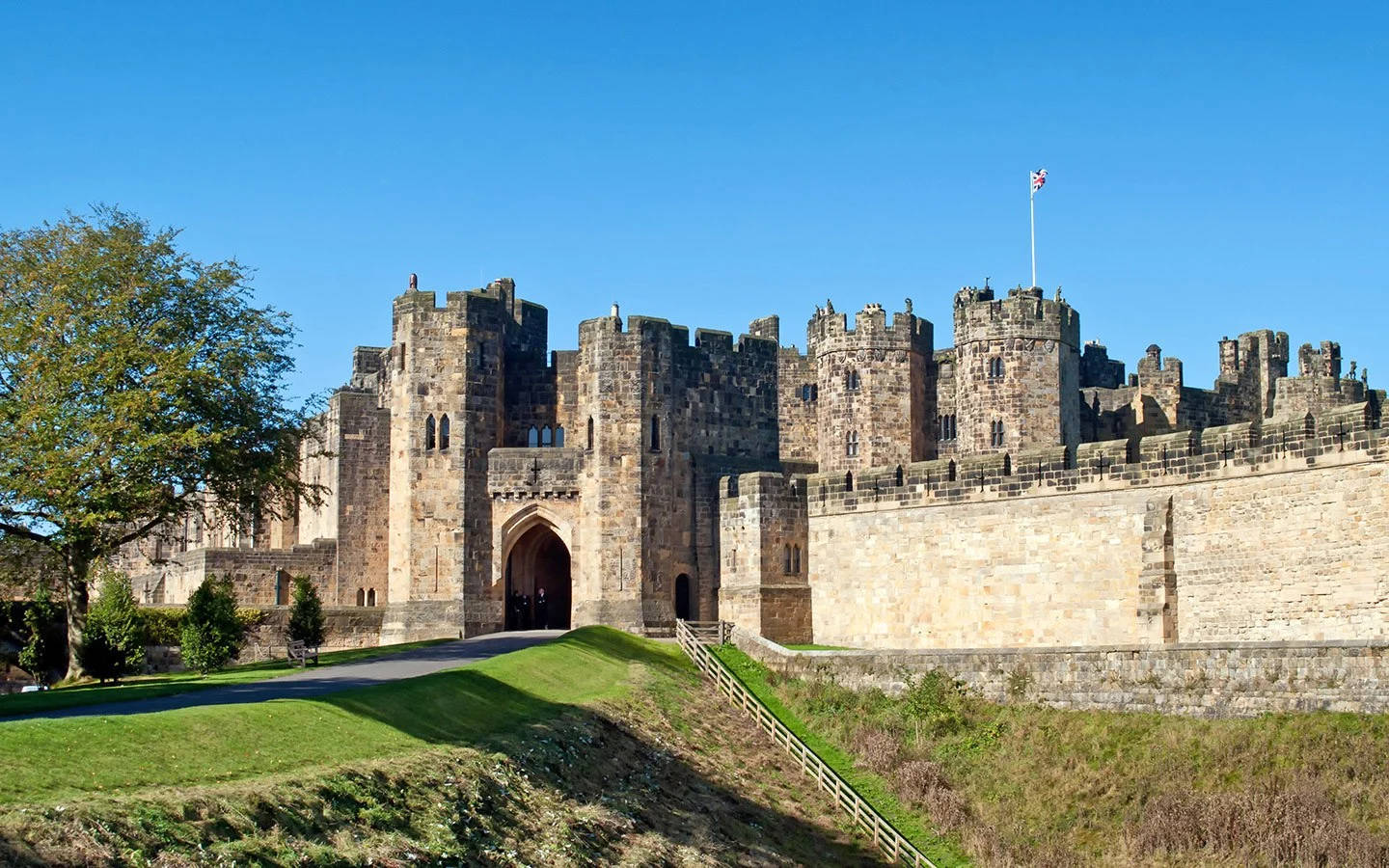
As the battleground between England and centuries of Scottish and Viking invaders, Northumberland has seen some fierce fights. So it’s no wonder you can’t move far in the county without coming across a castle. There are over 70 castles in Northumberland, and that’s just the ones still standing, making it a must-visit UK region for history lovers.
But with so many different castles to choose from, where do you start? Here are five of my favourite Northumberland castles to help you find your perfect match, whether your ideal castle is ruined and remote, palatial and perfectly preserved, or secluded and spooky.
Five must-visit castles in Northumberland
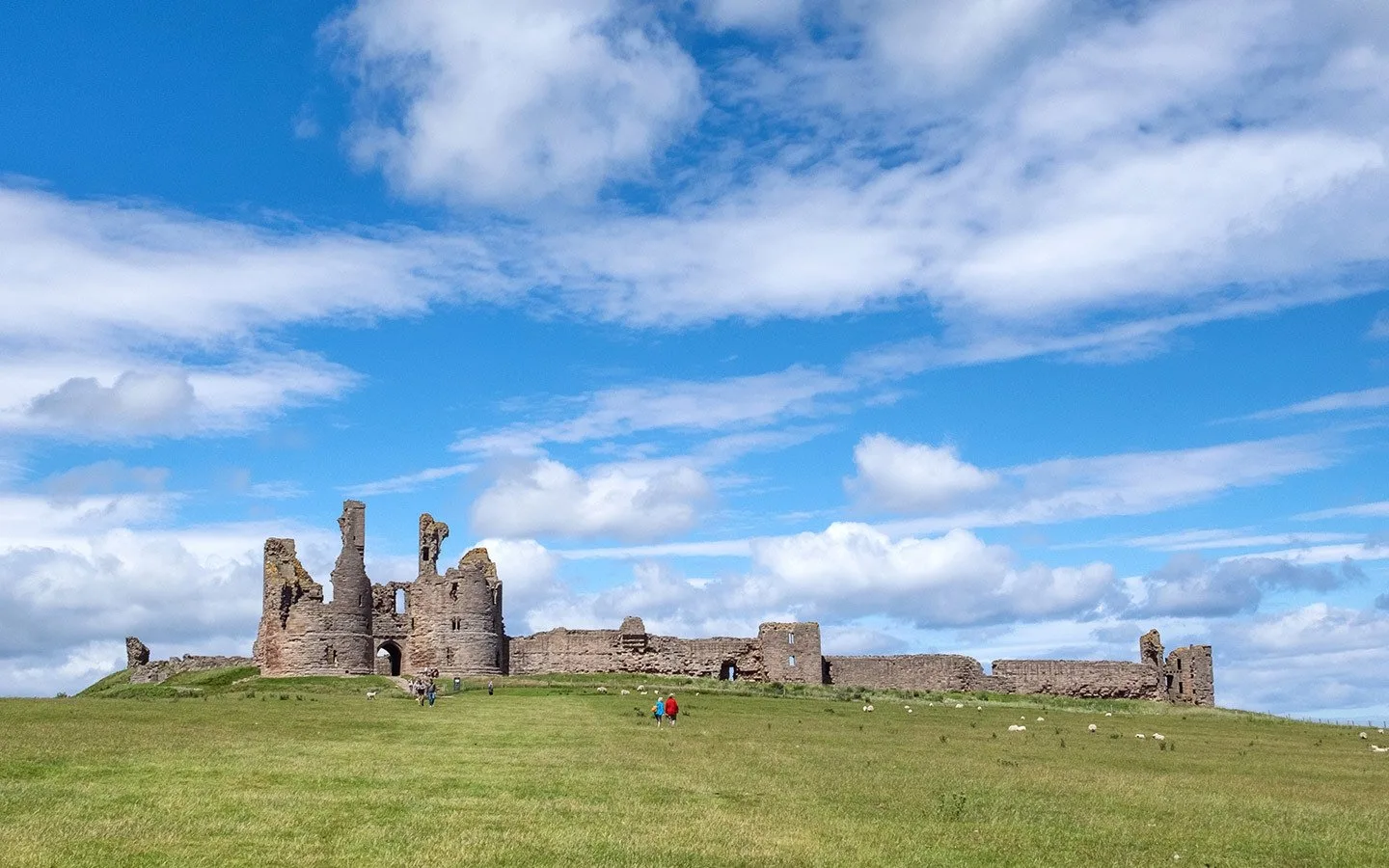
Bamburgh Castle: The dramatic one
Towering above the coastline and the village of Bamburgh from a volcanic outcrop, there’s no missing Bamburgh Castle. It stretches over nine acres, making one of the largest fortresses in the country. And there are great views from the battlements down to the long sandy beach below and out to Lindisfarne and seabird haven the Farne Islands.
Bamburgh began life as a Celtic fort and was the royal capital of the 6th-century kings of ancient Northumbria, but it’s been destroyed and rebuilt a few times since then. A Norman castle forms the heart of the site, but most of what you can see today was built at vast expense by Victorian industrialist Lord Armstrong, whose descendants still live there.

Sixteen rooms are open to the public, showing off some of Armstrong’s 3000-strong collection of art, furniture, armour and china. There’s also an Archaeological Museum with Anglo-Saxon finds unearthed around the castle, and the Armstrong & Aviation Museum for vintage planes, wartime artefacts and the story of the Armstrong family.
Bamburgh Castle is located at Bamburgh, NE69 7DF. It’s open daily 10am–5pm (last admission 4pm) from mid-February to autumn. Entry costs £15.50 adults, £7.65 children aged 5–16, or free for Historic Houses members. Car parking costs an extra £4.

More things to do in Bamburgh
Try out the surf or take a walk through the dunes on sandy Bamburgh Beach, visit historic St Aidan’s Church which has been a place of worship for 1400 years, and call in to the Grace Darling Museum, dedicated to the Victorian lighthouse keeper’s daughter who rescued survivors from a paddle steamer shipwrecked off the Northumberland coast.
The castle’s Clock Tower Café serves drinks, sandwiches and cakes. There’s also Wyndenwell café (25 Front Street) in Bamburgh village which does delicious ice creams. Or the Potted Lobster restaurant (3 Lucker Road) specialises in local fish and seafood.
Where to stay near Bamburgh Castle
You can stay right inside the castle walls either in its 13th-century Clock Tower (sleeps 5) or in the Neville Tower pictured below (sleeps 4). They also have a selection of self-catering properties to rent in Bamburgh village. Or The Victoria Hotel* is a dog-friendly hotel next to the village green with contemporary-style rooms, some with castle views.

Chillingham Castle: The spooky one
Built in the 12th century on the site of an old monastery, Chillingham Castle became the seat of the Grey family in the 1600s and is still owned by their descendants. It hosted royal visitors like Anne of Denmark and King Edward I, who visited on his way to fight William Wallace’s Scottish army. But it’s the castle’s uninvited guests who’ve made it famous.
It’s claimed that Chillingham is Britain’s most haunted castle, and its paranormal activity has attracted visits from TV spook-hunters Most Haunted and Ghost Hunters International. When you walk through its dungeons and torture chambers, and hear grisly tales of the people executed here, you can see how it got its creepy reputation.

The castle was lovingly restored by its current owners after being abandoned in the 1930s, and you’ll find their eccentric collection of curios on show, with prehistoric elk horns and Antarctic expedition sledges alongside more traditional tapestries and suits of armour. Take a ghost tour (or join in on a more hands-on ghost hunt) to see if you can spot the White Pantry Ghost, the Ghost in the Chamber or hear the Voices in the Chapel.
Chillingham Castle is located in Chillingham NE66 5NJ. It’s open daily 11am–5pm (last admission 4pm) from April to early November. Entry costs £11 adults, £10 over 65s, £7 children under 16, or free for Historic Houses members.

More things to do in Chillingham
Chillingham is pretty tiny but you can take a look around 15th-century St Peter’s Church. There are also guided tours of the Chillingham Wild Cattle Association’s parkland sanctuary for ancient breeds of cattle (combined tickets with the castle are available).
The café in the Minstrels Gallery at the castle serves lunches and afternoon teas. Or it’s not far to Alnwick which has a good selection of places to eat (see below).
Where to stay near Chillingham Castle
If you’re feeling brave, you can spend the night in one of the castle apartments, which sleep 2–7 people and are either inside the castle itself or in the adjacent coaching rooms. You can also stay at nearby Chillingham Manor,* a grand country house bed and breakfast with three en-suite bedrooms, decorated with artworks and antique furniture.
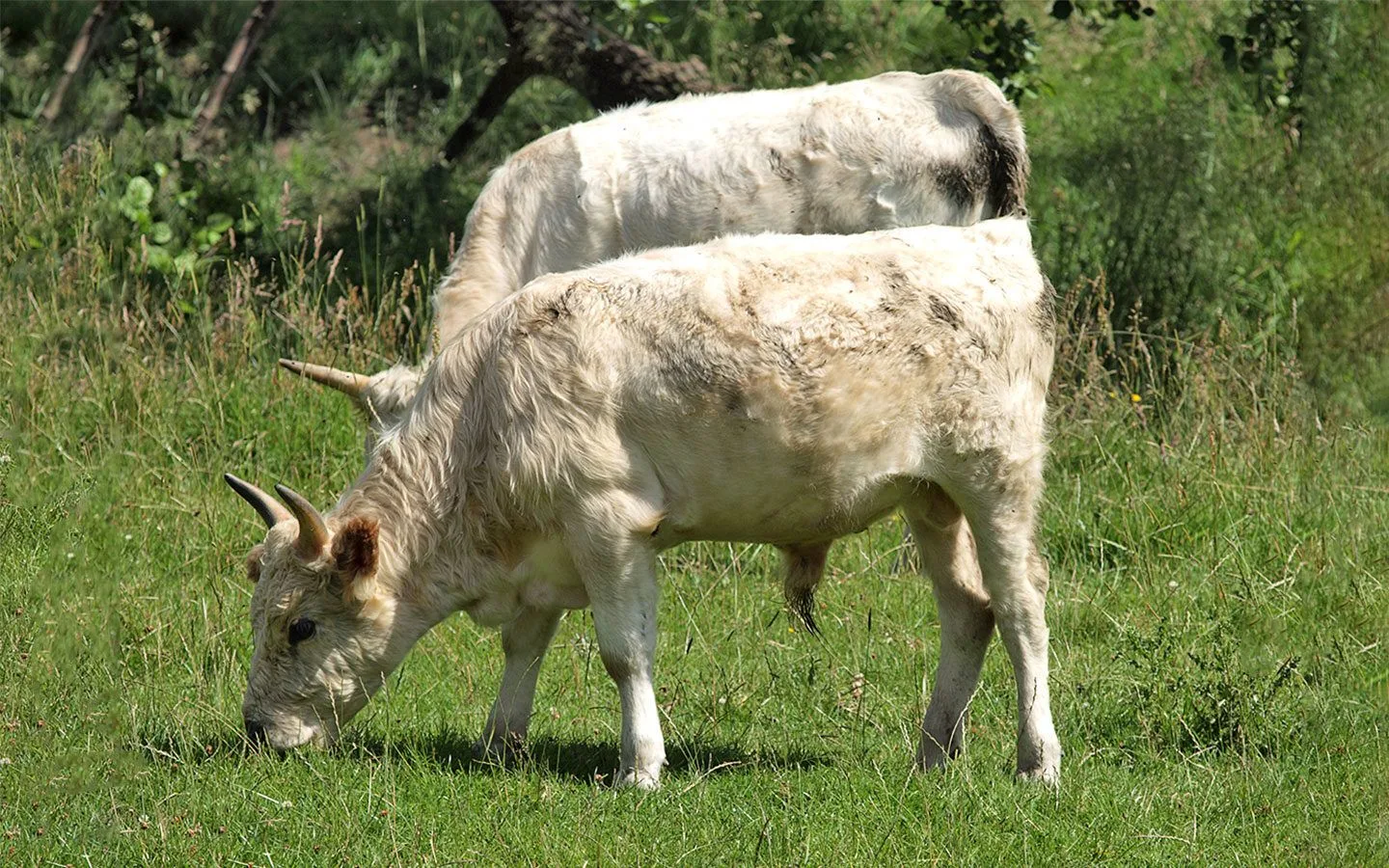
Alnwick Castle: The lavish one
Alnwick Castle has been home to the Dukes of Northumberland for over 700 years, and is still lived in by the family today, but this is a family home on a seriously lavish scale.
It’s the second-largest inhabited castle in England after Windsor and is one the most famous castles in Northumberland, with an exterior of grand turrets and towers, and ornate interiors which were refurbished in the 19th century in Italian Renaissance style.
The castle staterooms have silk walls, gold and silver details, elaborate carved ceilings and one of the country’s best private art collections. Not to mention a double-level library with 14,000 books. Alnwick’s storybook good looks mean it’s had its share of on-screen fame, including as Hogwarts in the Harry Potter films and in TV series Downton Abbey.

There are tours of the staterooms, grounds and Alnwick’s film locations as well as exhibitions about Alnwick’s past residents, who range from gunpowder plotters to famous knights. There are plenty of family-friendly events too, including broomstick training sessions for Potter fans, archery, magicians, court jesters and falconry displays.
Alnwick Castle is located in Alnwick NE66 1NQ. It’s open daily 10am–5.30pm (last admission 3.45pm) from late March to late October. Entry costs £20.20 adults, £16.50 students/over 60s, £10.75 children aged 5–16, or free for Historic Houses members.
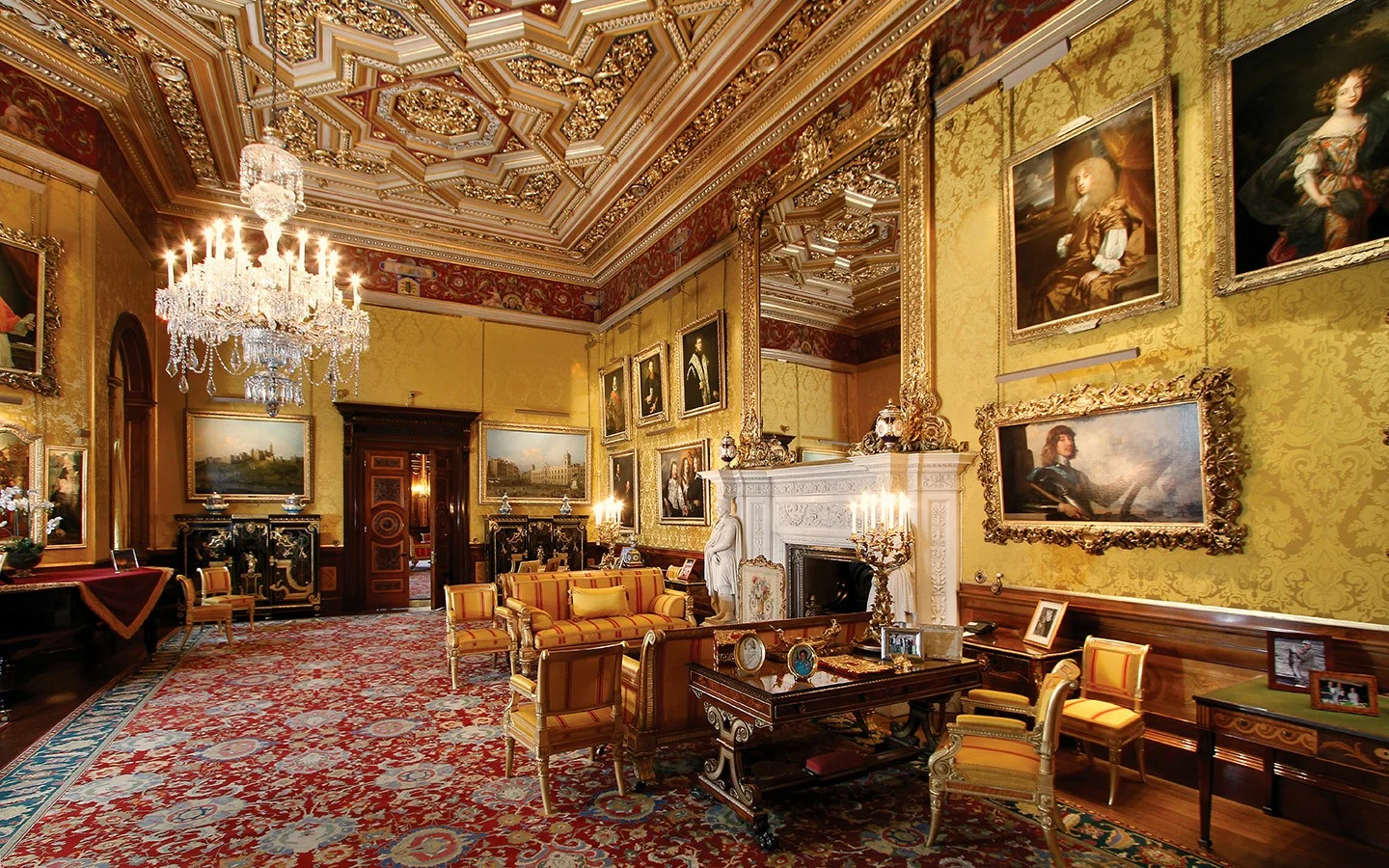
More things to do in Alnwick
The Alnwick Garden next to the castle has fountains, formal walled gardens, a maze and poison garden. Bibliophiles won’t want to miss Alnwick’s eclectic Barter Books second-hand bookstore. Or call into the White Swan pub in Alnwick for a drink in the bar, where the original interiors from the Titanic’s sister ship have been reconstructed.
The castle has a courtyard café or you can get fish and chips from their Stables Fryery. There’s also a gorgeous treehouse café and restaurant in the grounds of the Alnwick Garden. Or options in Alnwick include Grannies traditional tea room (18 Narrowgate), Di Sopra Italian restaurant (9 Bondgate Within) and Lilburns Bistro (7 Paikes Street).
Where to stay near Alnwick Castle
The Cookie Jar* in Alnwick is a former convent turned luxurious hotel just a few minutes from the castle. It has 11 rooms and suites, including one inside an old chapel. Or The Plough* is an traditional coaching inn from 1896 with lots of period details.

Lindisfarne Castle: The remote one
Perched on a rocky peak on an island that’s only accessible when the tide is out, you can’t get much more remote – or well protected – than Lindisfarne Castle.
This unique Northumberland castle was built on a volcanic plug known as the Beblowe Crag, and began life as a 16th-century fort. It was partly constructed using stone ‘recycled’ from Lindisfarne Priory after it was destroyed in the Dissolution of the Monasteries.
For 300 years the castle was a lookout, first for garrisons of soldiers from Berwick and later for the coastguard. In 1901, Edwardian publishing magnate Edward Hudson bought the castle to transform it into a holiday retreat. He was the owner of Country Life magazine so had it renovated in Arts and Crafts style by his friend, architect Edwin Lutyens.

You can still see some of Lutyens’ original interiors inside the castle, where it was divided up to replicate a country house. There’s also a walled garden next to the castle which was designed by Gertrude Jekyll, a friend of Hudson. And in another clever bit of recycling, old boats have been turned upside-down and used as storage sheds.
Lindisfarne Castle is located on Holy Island TD15 2SH. It’s normally open February to late October (except Fridays), but times vary with the tides, so check before visiting. Entry costs £8.50 adults, £4.25 children aged 5–17, or free for National Trust members.

More things to do in Lindisfarne
Not all of the stone from Lindisfarne Priory was stolen to build the castle, and you can explore the ruins that are still standing. You can also find out more about the island’s history and the Lindisfarne Gospels at the Lindisfarne Heritage Centre.
Stop off at the Pilgrims Coffee House and Roastery (Marygate) to refuel with coffee and homemade scones and cakes. Or try some local mead (a fortified wine made with grapes, honey and herbs) at St Aidan’s Winery, who also produce beers and rums.
Where to stay near Lindisfarne Castle
If you don’t mind being cut off by the tide twice a day, you can spend the night on Holy Island and enjoy the peaceful atmosphere. Eden Cottage* is a two-bedroom self-catering cottage which sleeps four, with exposed beams, original stonework and a woodburner. Or the welcoming Belvue Guesthouse has two stylish studios and a twin room.

Dunstanburgh Castle: The ruined one
Set on a remote, windswept coastal headland, Dunstanburgh Castle just needs a brooding hero in a billowing white shirt emerging from the ruins to be straight out of a romantic novel. The castle is surrounded by sheer cliffs on one side and a rocky, wave-battered shoreline on the other, with a twin-towered keep rising up above crumbling ruins.
It’s hard to imagine, but it was once one of the most impressive castles in Northumberland. Dunstanburgh was built in the 14th century by Thomas, Earl of Lancaster, on the site of an old Iron Age fort, but was badly damaged in the Wars of the Roses. Since then its ruins have inspired writers and painters like Turner, who came to capture the views.
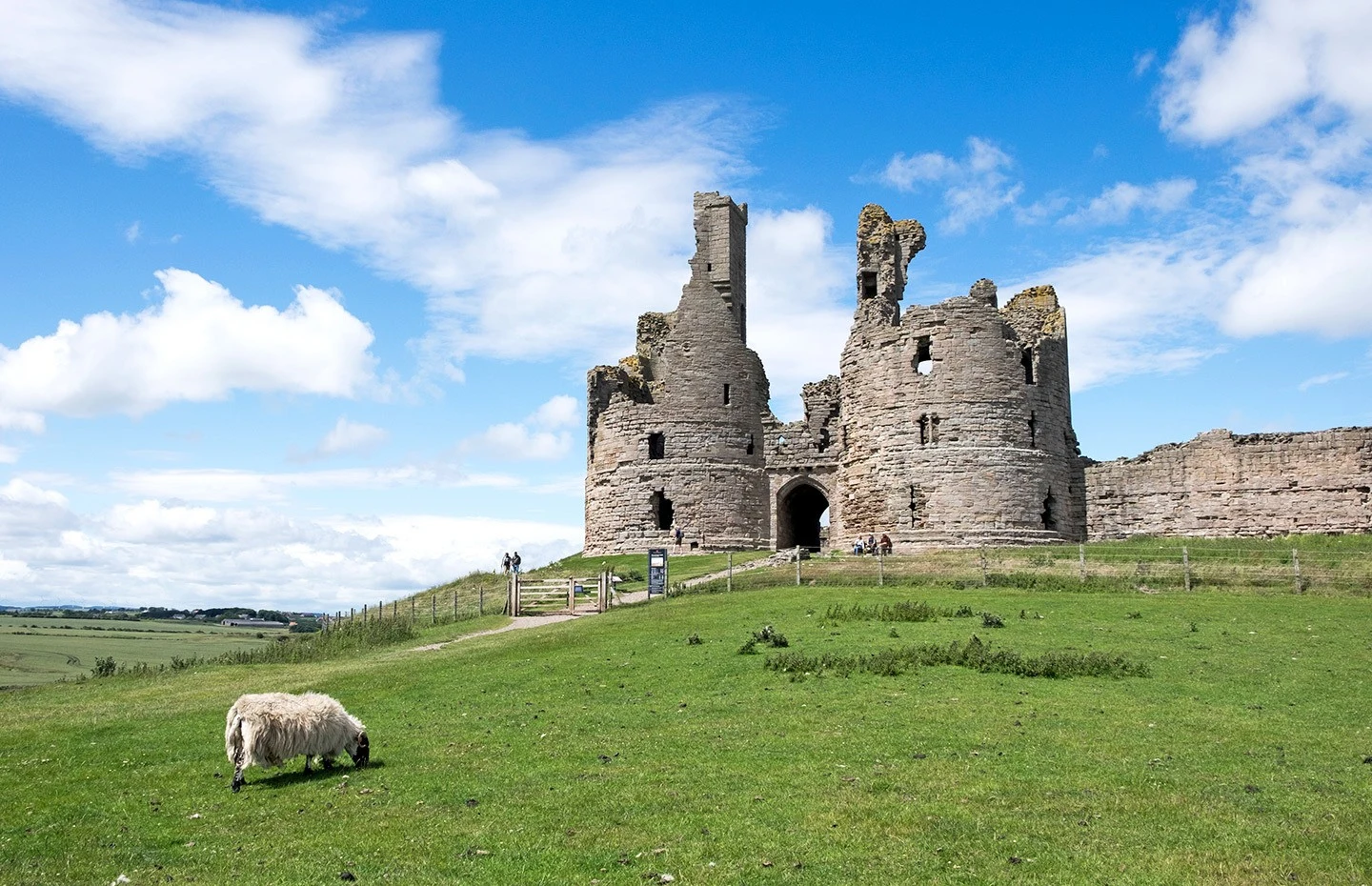
Dunstanburgh is also a Site of Special Scientific Interest as a home for birds and wildlife, and you can spot kittiwakes and other sea birds nesting in the cliffs. You can only reach the castle by foot along a 1.3-mile coastal pathway from Craster or Embleton, which stops it getting too busy, so if you’re lucky you might get your own romantic moment.
Dunstanburgh Castle is located in Craster NE66 3TT. It’s open daily 10am–5pm April to October (10am–4pm and not every day off-season). Entry costs £5.90 adults, £5 students/over 65s and £3.10 children aged 5–17, or free for English Heritage* members.

More things to do in Dunstanburgh
There’s not a lot more to Dunstanburgh than the castle, but you can follow the coast path in either direction to enjoy the stunning coastal scenery. And local artist Mick Oxley has a gallery and studio in nearby Craster which displays his seascapes.
Craster is famous for its kippers, and you can pick some up from the smokehouse at L Robson & Sons, along with smoked salmon and haddock. Or try one of the area’s other seafood specialities – crab sandwiches at the Jolly Fisherman Inn (Haven Hill).
Where to stay near Dunstanburgh Castle
Craster Rocks and Craster Waves* are two neighbouring self-catering properties in National Trust farmland surrounding Dunstanburgh Castle, with uninterrupted sea views. Craster Rocks sleeps six and Craster Waves sleeps four, or you can book them together.

Map of castles in Northumberland







Robert gray
Saturday 25th of February 2023
So excited we will be going this year and one the the castles is still owned the gray family still connecting the dots but looks like my descendants still have ownership how cool.
Lucy Dodsworth
Sunday 26th of February 2023
Have a great trip!
Sally Akins
Monday 10th of June 2019
I've never been to Northumberland yet, but I love visiting castles so it looks like a trip is definitely on the cards. I'm amazed by how well restored some of the castles are - Bamburgh looks particularly gorgeous
Pothole Pete
Sunday 24th of September 2023
@Sally Akins, My Australian Neice, when she arrived here fr a week, said that she and her Aussie mate called Northumberland the 'ABC' country. Another Bloody Castle !
Lucy
Tuesday 11th of June 2019
If you like castles then you'd love it – such a good range too!
Ann Moody
Monday 10th of June 2019
Dunstanburgh has been the first one in my bucketlist, until I visited in the last summer. Awesome! and never forget to buy the famous Craster kippers, watching the wading birds, Saddle Rock, wild flowers like the purple bloody cranesbill, and Marram and lyme grass grow on the sand dunes!
Lucy
Tuesday 11th of June 2019
The Craster kipper are so good! I missed out on Dunstanburgh on my first couple of trips to Northumberland so was really glad to finally make it there.
alison abbott
Monday 10th of June 2019
I love reading your posts. I've never been to the UK and live vicariously through all your wonderful writing. Surely Northumberland and its castles will have to be on my list. And those boats turned sheds-genius bit of upcycling!
Lucy
Tuesday 11th of June 2019
Thanks Alison, glad to introduce you to some new parts of the UK!
Suzanne Jones
Sunday 9th of June 2019
Northumberland is a great park of the UK for exploring castles. I've only seen two of them so might have to make a trip back. I'd love to visit Alnwick Castle.
Lucy
Tuesday 11th of June 2019
Alnwick is amazing, so lavish inside, and the gardens are brilliant too.